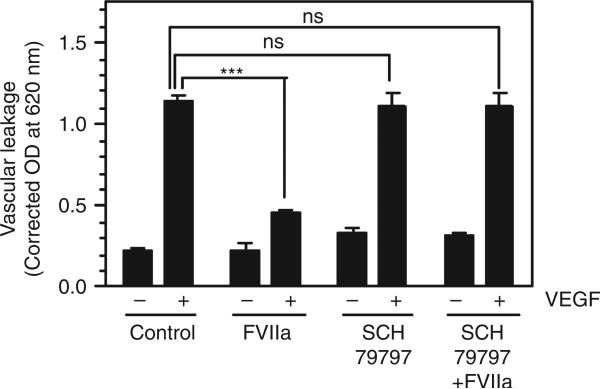Fig. 5.
Protease-activated receptor 1 (PAR1) antagonist blocks the FVIIa-induced barrier protective effect. Wild-type mice were injected with a control vehicle or the PAR1 antagonist SCH79797 (1.7 mg kg−1 body weight) via the tail vein. Thirty minutes later, saline or FVIIa (120 μg kg−1 body weight) was injected into mice via the tail vein, and this was followed by intradermal injection of vascular endothelial growth factor (VEGF) or saline. Vascular leakage into the skin tissue was measured as described in Materials and methods (six mice per group). ***P < 0.001. NS, no statistically significant difference.

